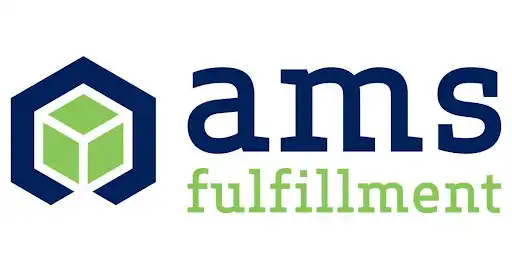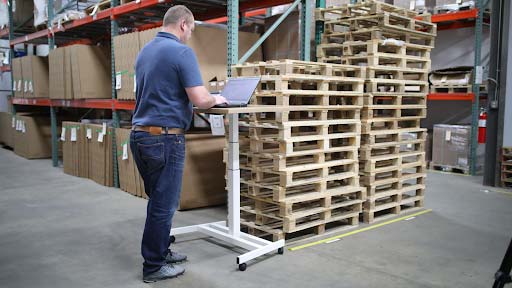Logistics and the supply chain is a huge subject – very broad, covering a wide range of processes and management types. There is no ‘overall’ management of logistics and the supply chain, instead, there are many processes along a chain that is always evolving and adapting. The concept of logistics and supply chain management will be discussed in this article.
Logistics by itself will be about items in the supply chain – logistics management focuses on the movement and storage of these items. Supply management, on the other hand, is far more comprehensive. There are many partners in the supply chain. The chain begins with sourcing, moves to manufacturing, from there to transporting, then storing or warehousing, on to fulfillment, and finally to delivery to the customer. It’s a long chain and an extremely vital one as we have seen.
How are logistics and supply chain management related? Logistics focuses on the movement and storage of items in the supply chain. Logistics management activities are sometimes handled by the manufacturer, but more often this part of the chain is handled by a third-party logistics company (3PL). The 3PL is a vital participant in the supply chain, fulfilling several processes.
Supply chain management (SCM) is more comprehensive, covering all of the coordination between partners that have a role in this network. The number of partners that are playing a role in the supply chain is quite large. Imagine locating and transporting source materials, manufacturing a product, transporting that product on ships, on trains, and in trucks to a location for warehousing and fulfillment, receiving orders, handling, packaging the product, and shipping to the end customer – that’s the supply chain.
The ultimate goal of SCM is to find the best way to ensure that goods flow efficiently, customers have an excellent experience, and the business moves forward.
How the Supply Chain and Logistics are similar is in the focus on goods, services, and information. Of course they both aim to support the businesses and increase customer satisfaction, and most importantly they involve the same flow of goods from the supplier to the manufacturer, to the wholesaler and/or to the fulfillment service company, to the retailer, and/or the individual consumer. Along with this flow is a great deal of shared information.
A 3PL, such as AMS Fulfillment will uphold and support the larger supply chain by receiving, warehousing, assembling, packaging, and delivering the right products at the right time, reducing costs and helping retain customers through accuracy and efficiency. All of this is accomplished through a comprehensive information system. The 3PL provides a means to deliver goods from the most cost-effective location for fulfillment to the location of the customer.
There are three types of logistics – a 3PL will be an expert at handling both inbound and outbound logistics and reverse logistics. Inbound, outbound, and reverse refer to the movement and direction of certain goods, parcels, items, or information within a supply chain network. This movement is between the point at which the products or information originate and the final consumption point.
Beginning with inbound logistics, we’re referring to the movement of goods from suppliers to production. This includes storage and transportation of various raw materials from the suppliers through the warehouse and further through production facilities of manufacturers for processing and production.
From raw materials to manufacturing is inbound. Inbound logistics is the first step in the logistics chain and management process. It is essential to have an expert process flow when it comes to inbound because it will impact all others.
Completed product in transit to the 3PL for fulfillment concludes inbound and begins outbound. Outbound logistics is the movement of finished products from production facilities to the next supply chain link. The fulfillment company takes charge of transporting the product to the warehouses. Outbound is the order fulfillment process. All the products that are intended for the customers or end users will move through this outbound logistics flow. Outbound logistics management is once again a process unto itself.
The outbound logistics movement refers to businesses shipping and delivering their products from the warehouse to the customer or consumer, and this entire process is under the umbrella of fulfillment services provided by a 3PL.
Reverse logistics is the Returns process when the customer or end-user returns the product and it has to go back through the supply chain to its final resolution. Of course, this is its own process too and this process is evolving. In response to the necessity of sustainability, there are efforts underway to reuse, refurbish, or recycle as much as possible. If this is accomplished well, it will make the supply chain circular, at least in part.
A recent article in the AMS Fulfillment blog goes into detail on managing reverse logistics.
“A top-notch fulfillment company will have a Returns Management Team (RMT) trained and experienced in handling a wide variety of retail returns and individual customer returns. This team will know the client’s wishes: the right process to boost customer satisfaction and protect the client’s brand; the best way to keep the return from being experienced as a loss; and how to minimize any losses that do occur.
“Once the product is in the hands of the fulfillment company the RMT takes over and makes the decisions on the product. With the client’s wishes (or what is referred to as returns disposition rules) in mind, the Team will begin to determine why the customer returned the product – is it faulty, was it damaged during the delivery, or the return process. If so can repairs be made? Is this product of high enough quality to repackage and restock?”
The reverse logistics flow encompasses all activities carried out after the point of sale or the end product life cycle.
Marketing is considered one of the functions of logistics. A recent online article speaks to an aspect of management through marketing. It attributes the 5 P’s to logistics, pointing to the process of marketing and the link between logistics and marketing. The article asks, “What are the 5 P’s of logistics?” It defines them as follows:
“The major cause of conflict for logistics and marketing interface is related to the 5Ps (product, price, place, promotion, and packaging) of marketing. Without the successful link of logistics and marketing, the firm may be unable to provide good customer service, resulting in a dissatisfied customer or a lost sale.”
5 P’s of logistics Management are listed as:
Value Added Services (VAS) is another aspect of logistics. In simple terms, a VAS is any additional capability that a 3PL may offer in addition to picking, packing, shipping, and other basics of fulfillment. These services have become especially prevalent with the rise of e-commerce, where customers often expect more than a plain cardboard box.
Being able to provide these added-value services means a 3PL provider can offer greater flexibility and broader options for customization. Some of the most common VAS include kitting and assembly, packaging and labeling, reworking and refurbishment, and printing and design.
As you have seen, while we can compare both logistics and supply chain management programs, because they intercept in many ways, in reality, they are quite different. Logistics involves inbound, outbound, and reverse or returns, plus marketing and value-added services included in this writing. This chain will flow a tremendous amount of information and many different processes of management.
Supply chain processes, on the other hand, would begin with the extraction of raw materials, warehousing of these materials, shipment to the manufacturer via various modes of transport, receiving of the materials and creation of the product, shipping of the product to the fulfillment center, warehousing, packaging, shipping of the product to the end user. And even then the supply chain doesn’t end. A certain percentage of the products will be returned by the customer, and back into the supply chain for final disposition.
We have seen that the final disposition could be a return to the supply chain, making the chain circular. Concerning sustainability, the circular chain is greatly preferred.

Each researcher defines supply chain management differently. However, we would like to provide the simple definition as below: “Supply Chain Management (SCM) refers to the coordination of production, inventory management, location, and transportation among the participants in a supply chain to achieve the best mix of responsiveness and efficiency for the market being served” -Michael Hugos
Logistics is a subset of the supply chain involving the movement of goods between stakeholders to the end, which ideally is a satisfied customer. The goal is to move the product through the process with the lowest cost and best service. Product-driven logistics will flow inbound, outbound, and reverse or circular.
The system of industries, businesses, organizations, departments, people, activities, information, and resources involved in moving a product from supplier to customer is enormous.
Since 2020 and the beginning of the pandemic we have seen many significant challenges to the supply chain and flow of goods. At the same time, a functional supply chain was needed as never before, as the consumers nervously watched and worried about being able to get the products needed.
These past two years have brought tremendous pressures, frightening news reports, adaptations, and changes. Management has been put to the test to skillfully give clients a competitive advantage and bring value to customers while functioning in response to these profound changes. One has to admire the creativity and sustainability of the many partners in the supply chain, adapting and responding, and surviving.
The peak season for 2022 has come and gone, products were still manufactured, customers were still able to obtain what they need, and the logistics and supply chain management have been exemplary.